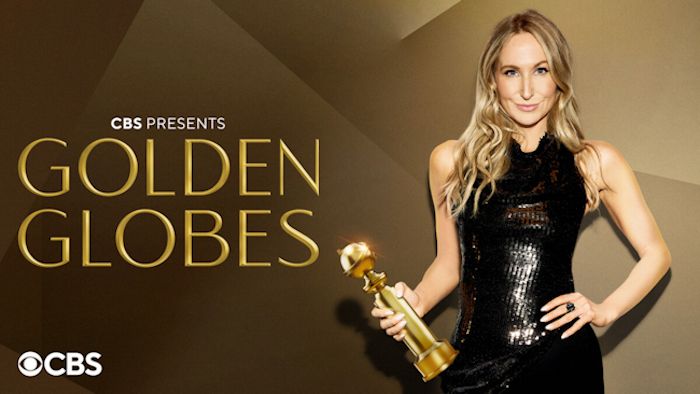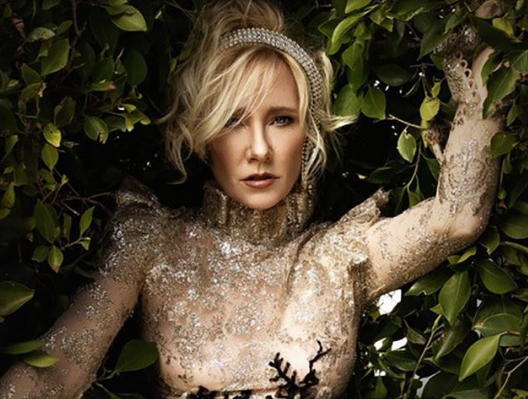
As Mrs. Potts once sang in the Oscar-winning Original Song “Beauty and the Beast,” it’s a tale as old as time. Several women direct a film to success, maybe even solidifying that success with a Best Picture nomination from The Academy of Motion Picture Arts and Sciences voting members, only to find out their film directed itself to Best Picture because they failed to earn a Best Directing nomination in favor of men who also directed a movie that year and earned more votes by the Academy.







This year’s snub of Greta Gerwig for Best Director is not her first considering her film Little Women received a Best Picture nomination in 2020, but was not nominated for Best Director that year. Still, once again this year, Gerwig‘s film earned a nomination for Best Picture, but her name was not included when then the nominations were announced for Best Director. Therefore, Greta finds herself in the same situation once again in 2024. Still, this time it brings to light the harsh reality and absolute ridiculous irony that despite its effort to make changes to be more inclusive and diverse in its nomination and presentation of the Oscars over the past five years, which included inviting and expanding the number of Academy voting members, which determines the nominations for the Academy Awards, only to be still living in its own mojo dojo casa house.









Rather than examine all of the categories the Academy nominations cover, which have all at times become problematic with wins that didn’t reflect a more diverse and inclusive body of winners, I’m going to focus on two award categories, Best Picture, and Directing. While Margot Robbie was indeed snubbed for Best Actress in a Leading Role, being her “stereotypical Barbie” carried the entire 2023 pop culture phenomenon to record numbers at the box office, she was however nominated as a producer in the Best Picture Category with Barbie earning a spot among the ten nominees for The 96th Academy Awards.









I want to rather focus on the Best Directing category that has plagued women nominees for the entirety of its 96 years. Often the nominees in that category have also received a Best Picture nomination, but this is hardly the case for women directors, so let’s go inside the Academy’s mojo dojo casa house that is the Directing category and look at the numbers that prove women are historically underrepresented, undervalued, and overlooked when it comes to all the Ken’s that have been nominated in the history of the Oscars.

While Greta Gerwig is the first filmmaker to have her first three solo features — Lady Bird (2017), Little Women (2019), and Barbie (2023) nominated for Best Picture, this is hardly a win when it comes to women and the Oscars. Let’s just say, the math isn’t mathing. Since 1929, when the first Academy Awards nominations and ceremony were presented, according to data collected from the USC Annenberg Inclusion Initiative, 13,253 nominees have been announced in its 95 years, but only 17% were women, and 83% were men. The ratio of women to men in nominations is 5 to 1, with 16% of all Oscar winners across the 95 years being women. Making matters worse, less than 2% of the nominees were women of color, Merle Oberon was the first woman of color to be nominated in 1936 for The Dark Angel (1935). The number of women of color who won an Academy Award was also 2% of those nominated, and the first woman of color to win an Oscar was Hattie McDaniel in 1940 for Gone with the Wind (1939).1












Now for the Best Directing category, better known as the Best Director nomination, of the 476 nominees in the category of Best Directing, less than 2%, or eight total have been women. The ratio adds up to 59 males nominated to every 1 woman. And in the 95 years of nominations and Academy Awards, 88 nominations were devoid of women altogether. Half of the nominations of women for Best Director have occurred after 2010, when the Academy was finally being openly questioned about its lack of women nominees in the category over history. There has only been one year in 95 where even two women were among the five nominees in the Best Director category for the year, and that year was 2021.





The eight women nominated for Best Directing were Lina Wertmüller in 1977 for Seven Beauties, Jane Campion in 1994 for The Piano, as well as in 2022 for The Power of the Dog, Sofia Coppola in 2004 for Lost in Translation, Kathryn Bigelow in 2010 for The Hurt Locker, Greta Gerwig in 2018 for Lady Bird, Chloé Zhao in 2021 for Nomadland, and Emerald Fennell also in 2021 for Promising Young Woman. Of the eight women nominated, three have won the award, Bigelow who was the first woman to win Best Director (2010), Zhao (2021), and Campion who was nominated twice and won in 2022, which adds up to 3% of all winners, with one woman being a woman of color (Zhao).














In the category of Best Picture, of the individual 844 nominees for the biggest award of Oscar Sunday, 17% were women. The first woman, Julia Phillips, was nominated and won in the category in 1974 for The Sting. 12% of all winners for Best Picture have been women, that’s a total of 16 women who have won for Best Picture in 95 years of Oscars. For 32 years of the 95, no women were nominated at all in the category. That number has changed since 1994, with at least one woman being nominated in the category every year since. An even more staggering number for women of color, where less than 1% of the nominees in the category were earned by a woman of color, that maths to just seven women of color nominated, with the first being Oprah Winfrey in 2015 for Selma, and the first win for women of color to win being in 2020 for Kwak Sin-ae for Parasite.






Of the 145 women nominated in the category for Best Picture, over half, or 57% of women have only ever received one nomination, including all the women of color nominees. To put that into perspective, this year Steven Spielberg earned his 13th nomination in the Best Picture Category in 2024 for Maestro, a record for an individual producer, since 1951 when producers were first named as nominees. As I said earlier, the math isn’t mathing for women at the Academy Awards. There have only been five women who were nominated four or more times: Kathleen Kennedy has received eight nominations, five of those nominations are for Spielberg directed projects, Dede Gardner has received seven nominations, Donna Gigliotti has received four nominations, Megan Ellison has received four nominations, and Kristie Macosko Krieger has received five nominations, all shared with Spielberg, and only two of these women, Gardner and Gigliotti,have won the Oscar for Best Picture.















While women’s place at the Academy Awards began with the nominations in the category of Best Actress in a Leading Role when you step away from the acting portion of the Oscars awarded, women’s efforts and work in the film industry as directors, cinematographers, composers, and visual effects supervisors have gone unrecognized for the majority of the 95-year history of the Oscars. When you remove the categories of Best Actor/Actress in a Leading Role or Best Actor/Actress in a Supporting Role in the math of women at the Academy Awards, women only received 12% of all nominations since 1929. When you consider the overall percentage of women who have won an Oscar decreased from 16% to 11% when the acting categories were removed from the mathing, it’s easy to see where women dominated in categories as well as where they are lacking.

The lack of acknowledgment of women’s creative excellence in the film speaks not only to the devaluation of women in the awards sphere but to longstanding bias and dismissal surrounding women’s work across the industry as a whole. The only categories women excelled at the Academy Awards were the stereotypical ones, where women dominated the nominations, Best Costume Design, Best Makeup and Hairstyling, and Best Documentary Feature Film.

The lack of acknowledgment of women at the Academy Awards, in favor of every man, drives home the plot of Gerwig’s film Barbie, and with her snub for the film in the Best Directing category, it’s the saddest but funniest of ironic developments in award season. It is important to note that there has been a change over time to allow women into the mojo dojo casa house, women earned more than 11 times as many nominations in 2023 as they did in 1929. At the first Academy Awards, women earned five nominations for acting alone, compared to 56 nominations across 13 of the 19 categories, with the high point for women coming in 2021 when 66 nominees were women, which is a total of 33% of the overall nominations. While it is far below the roughly 50% share of women in the population, it does demonstrate progress for women’s inclusivity and that recognition of women has evolved since the early days of film and the Academy Awards.


That does not negate the fact that the math says the Academy’s record of acknowledging the work of women of color, is abysmal. Only 2% of the nominees in the 19 categories over 95 years have been women of color, when you remove the acting categories, that drops to 1% for women of color at the Academy Awards, and only 26 Oscar winners have been women of color across 95 years. There has been growth for women of color as well, for each of the last five years nominations of women of color were in double digits. In 2021, 21 nominees were women of color, and eight women of color took home the Oscar, representing nearly 20% of all Oscar wins for women of color in 95 years.

There is also still room for more change at the Academy mojo dojo casa house, this year will be the first year that the diversity rules for the Best Picture category become mandatory. In June 2020, under its Academy Aperture 2025 initiative, the Academy established a set of “representation and inclusion standards” that a film would be required to satisfy to compete in the category. However, for the 94th and 95th Academy Awards (films released in 2021 and 2022), filmmakers were not required to fulfill the standards and only needed to submit a confidential “Academy Inclusion Standards” form for data purposes only. There are four general standards, of which a film must satisfy two to be considered for Best Picture: (a) “on-screen representation, themes, and narratives”; (b) “creative leadership and project team”; (c) “industry access and opportunities”; and (d) “audience development”.


As explained by Alissa Wilkinson of Vox in 2020, the standards:
“basically break down into two big buckets: standards promoting more inclusive representation and standards promoting more inclusive employment”.
Alissa Wilkinson – The Oscars’ new rules for Best Picture nominees, explained – VOX, 2020

The standards are intended to provide greater employment opportunities, in cast, crew, studio apprenticeships and internships, and development, marketing, publicity, and distribution executives, among “underrepresented” racial and ethnic groups, women, LGBTQ+ people, and persons with cognitive or physical disabilities, or who are deaf or hard of hearing.

Following the backlash and criticism over Greta Gerwig and Margot Robbie being snubbed for Barbie, with numerous journalists comparing it to the plot of the film itself Best Supporting Actor nominee and Ken himself, Ryan Gosling released a statement proclaiming his disappointment of the snub nominations.

It was followed by Best Supporting Actress from Barbie, America Ferrera and cast mate Simu Liu. But critics disputing the nomination snubs also noted regardless of Gerwig’s and Robbie’s omissions, both had previously been nominated for Best Directing and Best Actress in 2018. Robbie received a nomination for I, Tonya that year.

Critics also noted that Barbie received an overall eight nominations this year, including one for each of them in other categories, Gerwig was also nominated along with her husband Noah Baumbach for Best Adapted Screenplay, and more films directed by women were nominated for Best Picture than in previous years. This supports the thought that change has occurred over time and is still in progress as the years go on for the Academy Awards, meaning there is still hope for the Academy mojo dojo casa house to become a dream house for all women in the film industry.


- USC Annenberg Inclusion Initiative, “Gender at the Oscars: Women nominees and winners across 95 years at the Academy Awards” Inclusionlist.org (2023) ↩︎



